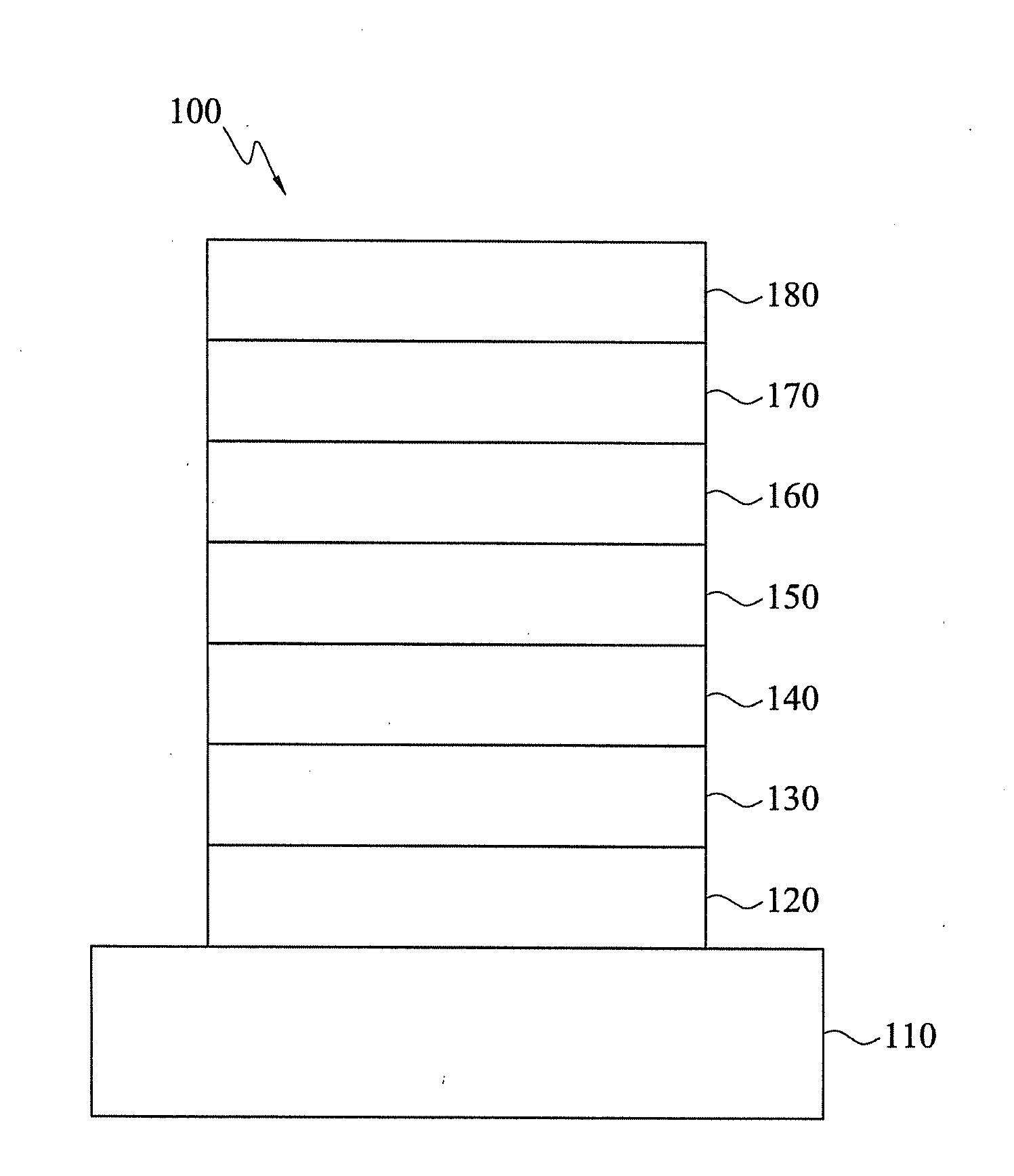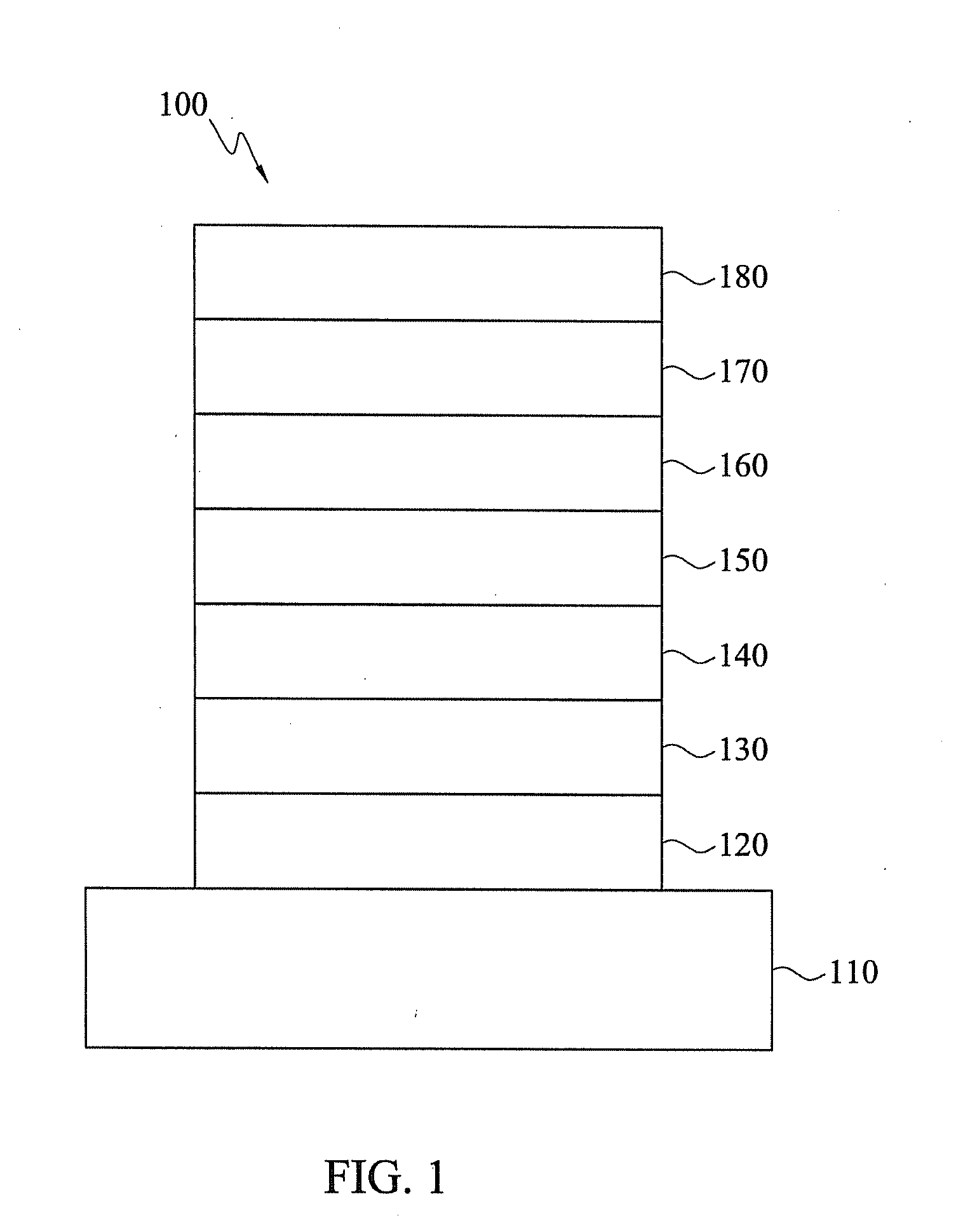Heterocyclic compounds and organic electroluminescent devices using the same
- Summary
- Abstract
- Description
- Claims
- Application Information
AI Technical Summary
Benefits of technology
Problems solved by technology
Method used
Image
Examples
synthesis example 1
[0055]A mixture of dibenzothiophene-4-boronic acid (10 g), 1,4-Dibromobenzene (9.4 g), tetrakis(triphenylphosphine)palladium (2.42 g), toluene (120 mL), ethanol (16 Ll), water (46 mL) and potassium carbonate (14.44 g) were added together, and stirred at 80° C. for 5 hr. The reaction was monitored by thin layer chromatography; After the completion of the reaction, the reaction mixture was quenched with water (100 mL) and extracted using ethyl acetate (100 mL). The organic layer was extracted with water (3×30 ml) and dried over anhydrous sodium sulfate. The collected ethyl acetate layer was passed through a celite column chromatography for further purification. Subsequently ethyl acetate layer was evaporated to dryness in a rotary evaporator under vacuum to yield 4-(4′-bromophenyl)dibenzothiophene in 13.52 g. A mixture of 4-(4′-bromophenyl)dibenzothiophene (10 g), bis(4-biphenyl)amine (13.08 g), Bis(dibenzylideneacetone)palladium(0) (0.152 g), sodium-t-butoxide (6.52 g), toluene (125 ...
synthesis example 2
[0057]In a 250 mL flask, a mixture of 4-(4′-bromophenyl)dibenzothiophene (10 g), N-phenylnaphthalen-2-amine (7.75 g), bis(dibenzylideneacetone)palladium(0) (0.59 g), sodium-t-butoxide (6.5 g), toluene (150 ml), tri-(tert-butyl)phosphine (0.55 g) were added together and refluxed under nitrogen atmosphere. The reaction was monitored by thin layer chromatography. After the completion of the reaction, the reaction mixture was quenched with water (50 mL) and extracted using ethyl acetate (70 mL). The organic layer was extracted with water (3×50 mL) and dried over anhydrous sodium sulfate. The collected ethyl acetate layer was passed through a celite column chromatography for further purification. Subsequently ethyl acetate layer was evaporated to dryness in a rotary evaporator under vacuum. The residue was further precipitated into methanol (100 ml), filtered and dried under vacuum. Compound 1-3 was obtained as a yellow colored solid in 7 g (49%) with a HPLC purity more than 99%.
Compound...
synthesis example 3
[0059]A mixture of 4-dibenzofuranboronic acid (13.3 g), 1,4-Dibromobenzene (10 g), tetrakis(triphenylphosphine)palladium (3.02 g), toluene (158 mL), ethanol (65 mL), water (65 ml) and potassium carbonate (21.69 g) were added together, and stirred at 80° C. for 5 hr. The reaction was monitored by thin layer chromatography. After the completion of the reaction, the reaction mixture was quenched with water (100 mL) and extracted using ethyl acetate (100 mL). The organic layer was extracted with water (3×30 ml) and dried over anhydrous sodium sulfate. The collected ethyl acetate layer was passed through a celite column chromatography for further purification. Subsequently ethyl acetate layer was evaporated to dryness in a rotary evaporator under vacuum to yield 4-(4′-bromophenyl)dibenzofuran in 13.7 g.
[0060]In a 500 mL flask, a mixture of 4-(4′-bromophenyl)dibenzofuran (10 g), bis(4-biphenyl)amine (12.7 g), bis(dibenzylideneacetone)palladium(0) (0.62 g), Sodium-t-butoxide (6.9 g), xylen...
PUM
 Login to View More
Login to View More Abstract
Description
Claims
Application Information
 Login to View More
Login to View More - Generate Ideas
- Intellectual Property
- Life Sciences
- Materials
- Tech Scout
- Unparalleled Data Quality
- Higher Quality Content
- 60% Fewer Hallucinations
Browse by: Latest US Patents, China's latest patents, Technical Efficacy Thesaurus, Application Domain, Technology Topic, Popular Technical Reports.
© 2025 PatSnap. All rights reserved.Legal|Privacy policy|Modern Slavery Act Transparency Statement|Sitemap|About US| Contact US: help@patsnap.com



